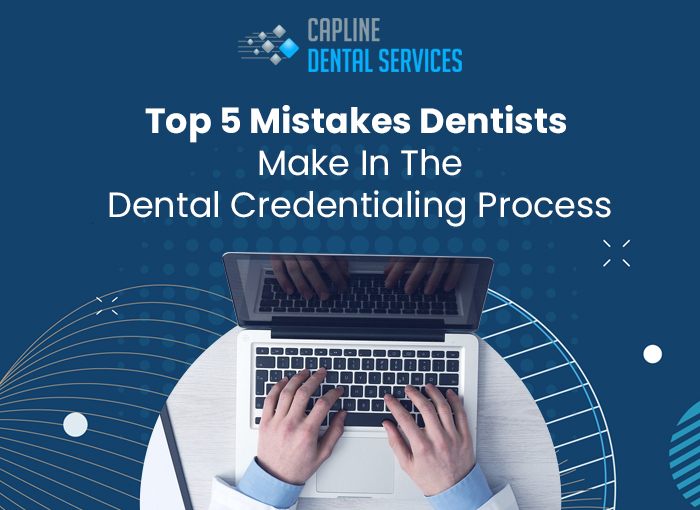
Putting together a solid dental insurance credentialing management and tracking process helps a dental practice stay on top of status updates and communication with insurance companies.
When putting this process together, it is important to be aware of the common mistakes that can be made and have tips on how to avoid them.
1. Spreading thin over multiple dental carriers
This is one of the most common mistakes made especially by new practices. While the urge to get started with a bang is compelling, this generally works against the practice.
One of the drawbacks is not having an optimized fee schedule due to tying up with networks that have lesser-known insurance organizations. This move could acquire more footfalls than can be managed which then affects quality and care.
This could add more strain on the staff to rectify downgraded or withheld payments. This could lead to attrition of staff while a slip in collections could have an impact on profitability.
Identifying leading insurance brands and enrolling with five to six of them is a good bet. This could balance the business from acquiring patients to managing the documentation and other processes.
2. Negotiating the fee schedule
All covered services and the specific contracted in-network rates that the insurance organization pays to the practice pertain to the fee schedule. These fees are the benchmark of the maximum amount the patient can get as well as the extent to which the patient’s plan will pay out for services rendered under the cover.
A blind acceptance of the first fee schedule is a regular error of some practices. All insurance companies may not agree to deliberate across the table but an attempt must be made in earnest. The fee schedule needs to be skillfully managed through an experienced negotiator who can maximize returns for the practice.
3. Starting the credentialing process too late
A delay in commencing the credentialing process is a costly mistake. Credentialing consumes a great deal of effort and time. One must be equipped to handle the task in its entirety or else it hinders the completion of the process within the expected timeframe. The process can take 90 days or more and can begin even before the newly hired associate dentist joins.
One must also pay attention to the re-credentialing process. Insurance companies have their own rules regarding re-credentialing and this covers the timeframe for renewals. One must not wait till the end of the term as this can lead to a disruption to the in-network status.
4. Sending claims with the wrong provider information
Submission of incorrectly filled claims that lack complete accuracy is something that must be avoided at all costs. This can cause serious repercussions including being charged with fraud.
A newly joined associate dentist who has not yet been credentialed may perform a service. Jotting down the NPI of the credentialed dentist is akin to claiming that a dentist who did not undertake the task, did do it.
The payment that is accepted by the practice on the basis of incorrect data on the insurance claim is tantamount to being deceitful. Getting credentialed at the earliest is critical and yet ethical.
5. Leaving applications incomplete
A submission that is incorrect or incomplete is a gross error on the part of the practice. As expected, applications are cumbersome and exhaustive. It is crucial that all questions are appropriately answered.
For questions not relevant to the practice, a N/A can be marked. Leaving any questions unanswered might make the insurance company assume the form to be incomplete. Many a time, a missing check mark can render the form to be returned.
It must be noted that all insurance companies have their own application requirements along with their own variations. The staff needs to consider each application with due merit.
Patients must be entitled to the care they deserve. A reason a dental practice gets selected is because of the In-Network. Hence, the need for credentialing and the processes expected to have adhered to cannot be undermined. As challenging and frustrating, being cognizant of the credentialing process is highly imperative.